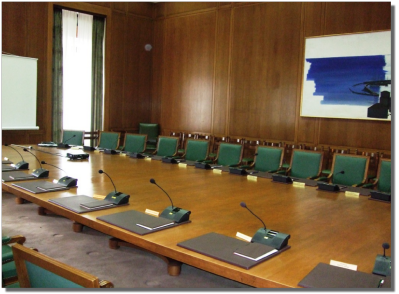Why a conference system?
| A conference system: | |
|---|---|
| Increases audibility dramatically | |
| Increases meeting order and flexibility | |
| Provides easy means for recording and archiving | |
| Is ideal as a “real” teleconferencing system | |
| Gives more people easy access to meetings and discussions | |
| Is ideal for formal meetings and functions such as state, councils, health councils and courts | |
| Lowers organization costs with reduced travelling and other “dead time” | |
|
|
Creates the possibility for “super video conference”, i.e. video conference for large numbers of participants |
Almost everything in the world today requires communication. Most is handled by informal coffee room meetings, telephone, e-mail, text messages, Twitter, Facebook and other meeting places who are all great tools but not without drawbacks, they are usually of a person-to-person-only communication and mass publishing nature.
For larger, longer in time, and more dynamic and personal
meetings with more than two, three participants, the problem of meeting order,
audibility and documentation immediately becomes apparent. 
A conference system provides everyone with their own microphone and speaker and also creates a personal space for papers and tools needed for the meeting without sacrificing the ability to hear and be heard.
In times where traditional conference travelling becomes increasingly less attractive due to rising cost- and climate awareness, the use of telephone and video conferencing is a very powerful alternative. The common use of traditional “table top” teleconferencing equipment has serious problems with audibility, even with low numbers of participants.

